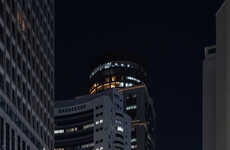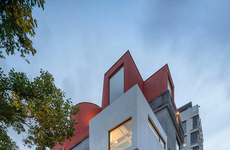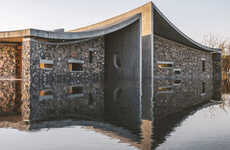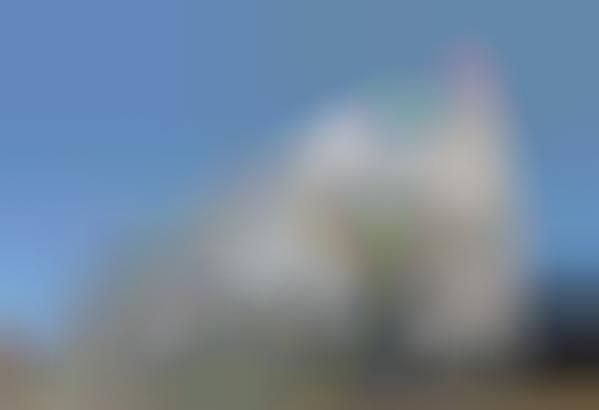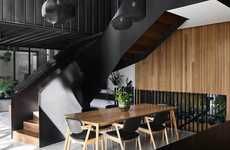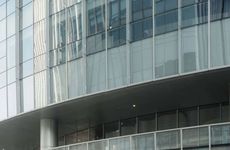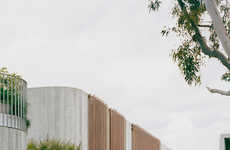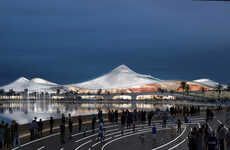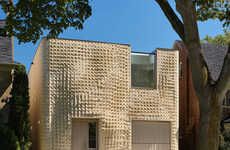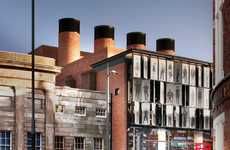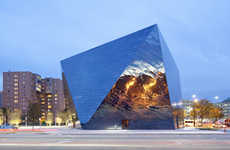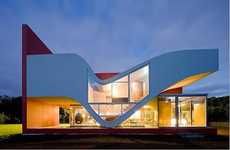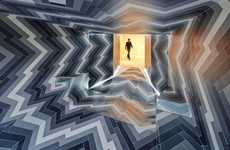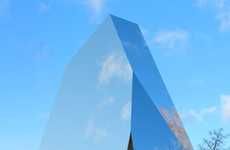
The Art Wall's Interior Will House Diverse Activities as Well
Amelia Roblin — October 8, 2011 — Art & Design
References: yankodesign
The Art Wall by Yongpeng Shen may strike the observer as something completely idiosyncratic, but when placed amidst the colorful cityscape of Melbourne, Australia, this project fits in perfectly. The Southbank area is already the setting for a diverse range of public, private and commercial activities, so it's only apt that an offbeat architectural language with a mixed-use internal program should tie the neighborhood together.
The elementary massing of the structure is composed of two enormous wedge shapes stacked one atop the other, with a great arched tunnel in its base that bridges the gardens below. Apartments, retail shops, studios, art galleries and a library are planned for the interior, contained within walls incised with peculiar shapes, collected from random structural forms of the buildings surrounding the Art Wall.
The elementary massing of the structure is composed of two enormous wedge shapes stacked one atop the other, with a great arched tunnel in its base that bridges the gardens below. Apartments, retail shops, studios, art galleries and a library are planned for the interior, contained within walls incised with peculiar shapes, collected from random structural forms of the buildings surrounding the Art Wall.
Trend Themes
1. Mixed-use Architecture - Disruptive innovation opportunities lie in creating unique and versatile architectural designs that combine multiple functions and activities.
2. Art-inspired Façades - Disruptive innovation opportunities exist in incorporating artistic elements into building exteriors to enhance aesthetic appeal and create a unique visual identity.
3. Community-centered Design - Disruptive innovation opportunities can be found in designing buildings that serve as communal hubs, accommodating various activities and fostering social interaction.
Industry Implications
1. Architecture - The architectural industry can explore innovative ways to combine different functions in a single structure, creating more dynamic and efficient spaces.
2. Real Estate - The real estate industry can capitalize on incorporating artistic features and versatile designs in their properties to attract a diverse range of clientele.
3. Cultural and Entertainment - Cultural and entertainment venues can benefit from community-centered designs that bring people together and offer a variety of activities and experiences.
5.5
Score
Popularity
Activity
Freshness


